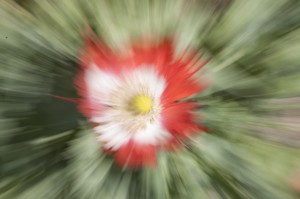Wine tasting includes all the senses and not just taste. It starts by using sight to inspect the wine clarity and color, then smell comes into play to enjoy the aroma and bouquet, next the tongue feels the wine to detect the body of the liquid and finally the words describing the wine is heard when shared with others. All these sense makes the experience very rich and enjoyable.
Follow these steps during wine tasting to gain the full use of your senses to take in all aspects of the wine.
- Look at the clarity and color of the wine. Using a white paper can help to see the clarity. White or pale wines are easy to see the clarity and color. It is helpful to hold the glass on a slight angle over white paper to see the thinnest edge of the wine to the glass. A deep red wine might seem opaque except right at the very thin edge of the wine to glass. If a white paper is not available, hold the glass up to the light.
- Next experience the aroma of the wine. It is very acceptable to stick your nose over the glass or deep into the glass to take short puff sniffs of the wine. Take your time to enjoy this step of enjoyment of the wine. Experience the aromas many times prior to the actual tasting. Lightly swirl the wine in the glass and smell again. Ask yourself to identify the aromas that stand out. Is the fruit of the grapes still lingering? Are their indications of the smoke from the barrel. Do you detect any earth or leather qualities? Refer to the “Aroma and Bouquet Exercise” article on this site for attributes that are common. Do you experience any of these?
- Now discover the taste of the wine and the feel of the body in your mouth. Take a small sip and let it roll over your tongue into your cheeks. Then draw a small bit of air into your mouth to experience the full flavor of the wine. Again, what are the flavors that are prominent. Note these flavor attributes.
- How does the wine feel in your mouth. Is it thin or does it have body in its feel on the tongue? Swallow the wine and draw more air over your tongue and around your mouth.
- Discuss your tasting with others. Did you taste some flavors or smell aromas that where similar in experience to others? Listen to hear if there were any nuances that you might have missed. Then repeat the aroma and taste experiences again to see if you can ascertain these aspects too.
Now that your senses have absorbed the full aspects of the wine, make some notes in a journal for reference later. It is with more experience in wine tasting that we can pickup more complete aspects of a wines’ depth more quickly. It’s a fun practice that improves our wine tasting experience.
